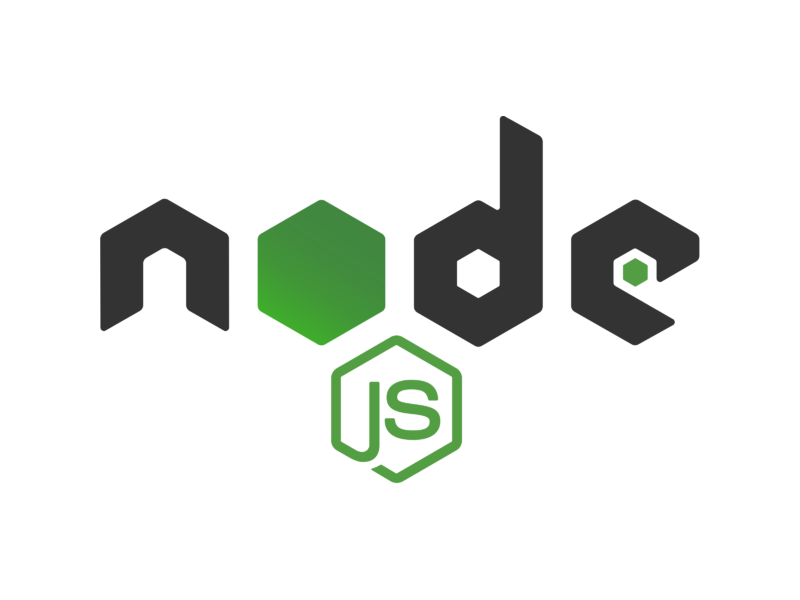In very simple terms, stripped away from the IT jargon, Node.js is a program that allows developers to create server-side applications in JavaScript. This means that you can use the same programming language for both the front-end and back-end of your web application.
Node.js is fast and efficient, and it’s a popular choice for building scalable, real-time applications. It comes with a lot of features that allow you to create powerful applications, and it’s easy to learn if you know JavaScript.
The key takeaway is that Node.js is not a programming language, but it is a runtime environment that allows you to run JavaScript code on the server.
Internet of Things (IoT)
The Internet of Things (IoT) is a network of physical devices, vehicles, home appliances, and other items embedded with electronics, software, sensors, and connectivity which enables these objects to connect and exchange data.
If a single IoT system consists of a great number of devices, then they must have the ability to communicate together. As a result, the task of managing requests and data streams in an IoT system becomes very complex. That’s why Node.js is a good solution for IoT projects in terms of scalability and code reusability.
Node.js is lightweight and efficient thanks to its event-driven, non-blocking I/O model. It enables developers to create scalable network applications quickly. This means that a Node.js-based IoT application can handle a large number of devices and concurrent requests.
In addition, Node.js is based on JavaScript, which is a widely used programming language. This makes it easy to find developers who are familiar with Node.js and can work on an IoT project.
Why use Node.js for IoT devices
With the advent of connected systems, it’s important to have the right strategy in place for the different types of sensors that might be part of the system. And there are a number of reasons why Node.js is the best platform for IoT systems.
First, Node.js is able to handle a large number of concurrent connections with high throughput. This is important in an IoT system where there may be thousands or even millions of devices sending data at the same time.
Second, Node.js has very efficient memory usage. This is important because many IoT devices have limited memory and processing power.
Third, Node.js is very fast. It can process multiple concurrent requests very quickly. This is important in an IoT system where the data streams may be very large and the latency requirements may be very low.
Examples of JS apps for Internet of Things (IoT)
- A connected thermostat that can be controlled remotely to optimize energy usage
- A smart home automation system that can be controlled remotely via a mobile application
- A security system that uses sensors to detect intruders and sends alerts to the homeowner
- A system that monitors soil moisture levels and sends alerts to farmers to optimize irrigation
- A system that tracks the location of assets and inventory in a warehouse
Network applications
Node.js can also be used to build network applications. Examples of network applications built with Node.js include:
- Web server
- Proxy server
- Instant messaging applications
- Real-time collaboration tools
Real-time collaboration tools
Collaboration tools help reduce the time needed to complete a task, improve communication among team members, make it easier to track progress, and generally streamline project management. Slack for group conversations, Trello for project management, and Google Docs for collaborative document editing are some of the most well-known collaboration tools.
The asynchronous and event-based architecture of Node.js gives developers of Node.js apps a significant advantage.
The real-time collaboration apps are based on the concept of event-based architecture. It means that the server reacts to the change in the state of the application and triggers an event. The event can be something like a new user joining the application, a user leaving the application, or a change in the data. The event-based architecture is very useful for real-time collaboration apps because it makes the apps more responsive and allows users simultaneously to work on the same web pages.
Node.js is also very efficient in terms of CPU and memory usage. This is important for real-time apps because they need to be able to handle multiple concurrent requests.
Multiple Concurrent Requests in Real-Time Chats
Node.js is a popular choice for building chat and internet relay chat applications, as it’s well suited for real-time, event-driven applications.
One of the many reasons why Node.js is fast and efficient, and it’s easy to create real-time applications with it is because a node app is based on asynchronous programming.
Asynchronous programming is a programming paradigm that allows a program to continue running without waiting for a task to complete. In other words, an asynchronous program can do more than one thing at a time and process multiple concurrent requests.
Node.js is built on an asynchronous programming model, which means that Node.js applications can handle a lot of concurrent requests without running into performance issues. This is in contrast to synchronous programming, where a program can only do one thing at a time.
There are many different ways to build a real-time chat application with Node.js. You can use a framework like Socket.IO, or you can use the built-in Node.js modules for creating a server and working with WebSockets. Thanks to its event API, Node.js can easily implement server-side events and push notifications.
Single-Page Applications with Node.js
A single-page application (SPA) is a web application that loads a single HTML page and dynamically updates the page in response to user input. Single-page applications (SPAs) use AJAX and HTML5 to create fluid and responsive web applications.
Node.js is a platform that is often used for developing single-page applications. This is because Node.js is able to handle a large number of requests and has a relatively small amount of overhead.
When developing a single-page application with Node.js, it is important to keep the server-side and client-side code separate. This means that the server should only be responsible for serving the HTML and JavaScript files, and the client should only be responsible for making requests to the server.
One way to keep the server-side and client-side code separate is to use a templating engine such as Jade or Handlebars. This way, the server can render the HTML files and the client can make requests to the server for data.
Streaming apps
Application streaming runs the software on the user’s local workstation, in contrast to remote server apps. A streaming app is a type of application that allows the user to receive and view data in real time. The data is transmitted as a stream of information that can be processed as it is received. Streaming apps are used in a variety of applications, such as video streaming, audio streaming, and data streaming. Some popular streaming apps built with Node.js include Netflix, Spotify, and Pandora.
Node.js’s native Stream API makes it a great choice for creating these kinds of streaming apps. The Stream API contains readable and writable streams or data that is flowing in/out of your program, provides quick data synchronization, and has a good developer-experience interface. Real-time data streams enable the transmission of portions of the app’s executable code to the local system while maintaining an open connection for the demand-driven download of new components.
Microservices Architecture
Microservices architecture is an approach to software development in which a large application is composed of small, independent, and modular services. Each service is responsible for a specific function and communicates with other services in order to perform its tasks. This type of architecture is advantageous because it allows for greater flexibility, scalability, and fault tolerance.
There are many different ways to structure a microservices architecture. One of the most popular approaches is to have each microservice expose a REST API, and communicate with other microservices using HTTP. This approach is simple and straightforward, and it is easy to scale and manage.
Another approach is to use a message queue such as RabbitMQ or Kafka. However, this approach is more complex, but it can be more efficient and scalable.
Node.js is a popular choice for microservices because it is lightweight and fast. It also has a large community of developers, which increases the development speed.
Frameworks to create social networking apps with Node.js
Creating social networking apps with Node.js is a great way to get started with this powerful platform. There are many different ways to do it, so you can find the approach that works best for you.
There are many different ways to create social networking apps with Node.js. Some popular methods include using one of the many available frameworks, such as Express, or creating a custom server with Node.js and Socket.io.
Another popular way to create social networking apps is to use a microframework such as Socket.io. This allows you to quickly create real-time applications without having to worry about the underlying details.
If you want more control over your application, you can create a custom server using Node.js. This gives you the ability to add any features you want, without being limited by a framework.
Node.js tidbits
1. Node.js is a platform built on Chrome’s JavaScript runtime for easily building fast, scalable network applications.
2. Node.js uses an event-driven, non-blocking I/O model that makes it lightweight and efficient, perfect for data-intensive real-time applications that run across distributed devices.
3. Node.js is an open-source, cross-platform runtime environment for developing server-side and networking applications.
4. Node.js applications are written in JavaScript and can be run within the Node.js runtime on OS X, Microsoft Windows, and Linux.
5. Node.js applications are typically coded using a text editor, and then executed within a command-line interface.
6. Node.js provides a rich set of libraries and modules that can be used to develop web applications (some of the popular ones include Express.js, Socket.IO, and Async).
7. Node.js also has a large and active community that provides support and modules for various purposes.
8. Node.js is used by some of the largest companies in the world, such as Walmart, eBay, PayPal, and Netflix.


















